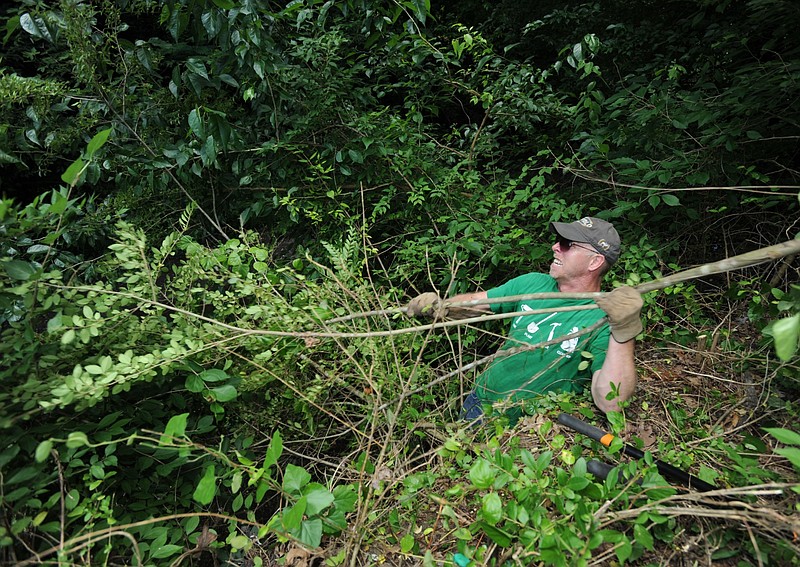Every now and again, the constant gardener is going to come across a plant that just doesn't quite belong. Invasive plants, from kudzu to Chinese privet, are the bane of nearly every landscape, yard and garden in the Natural State -- or at least, they're giving it their best shot.
By some estimates, Chinese privet may make up as much as 3% of forest biomass in Arkansas. In a state with more than 17 million forested acres, that's no small-scale invasion.
A June 30 field day will help attendees learn to identify and efficiently remove invasive plants, including Chinese privet and others.
John Pennington, extension water quality educator for the University of Arkansas System Division of Agriculture, and Vic Ford, associate vice president for agriculture and natural resources for the Division of Agriculture, will co-host the field day.
Pennington helped establish the invasive-plant research site, located behind the Cooperative Extension Service State headquarters, in February of 2020. The building is located at 2301 S. University Ave.
"Volunteers with Master Gardeners and Master Naturalists in Arkansas were curious about which methods might work best in their efforts to remove invasive privet," Pennington said. "The purpose of the demonstration is to evaluate the effectiveness of a variety of commonly used methods of invasive plant control. The primary invasive plant of interest to control at this site is Chinese privet."
"The goal of the program is to show results from various treatments at the invasive-plant removal demonstration site out back, to share information on resources for removal and to show different tools for removal," Pennington said.
"We will also be providing an opportunity for volunteers in attendance to help remove some more invasive plants that are out there in the demonstration plots and woods on the property," he said, noting that volunteers will only be conducting removal with mechanical removal and cut-and-paint pesticide.
"This removal is to continue an effort to restore the environmental health, function and diversity of our forested streamside [and]riparian area," Pennington said.
Ford will showcase a basal bark sprayer, which uses oil with an ester formulation for an herbicide to penetrate bark, as well as other treatment methods.
Various methods of control and removal that have been used at the research site include: mechanical pulling; cut stump and paint with glyphosate; cut stump and paint with triclopyr; foliar glyphosate; and foliar triclopyr.
Pennington said that so far, "there has been no significant difference between any of the treatments to control the privet, but they all seem to be effective and require follow-up treatment."
There is no cost to attend. To register, people may contact Pennington at (870) 329-7009 or by email at jhpennington@uada.edu, or RSVP to the event on Facebook at https://www.facebook.com/events/169147858505008/.
To learn more about extension programs in Arkansas, contact a local Cooperative Extension Service agent or visit uaex.uada.edu. Follow the agency on Twitter at @AR_Extension.
Ryan McGeeney is with the UA System Division of Agriculture.
